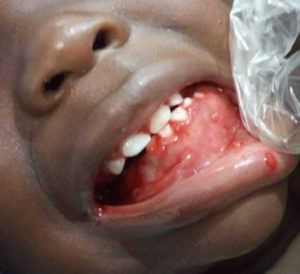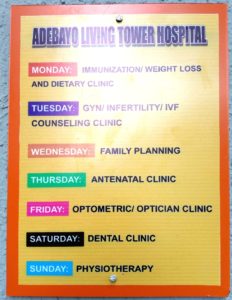Prevention of bleeding gum in children
Bleeding?
Bleeding is also known as a Hemorrhage. Hemorrhage is blood escaping from the circulatory system as a result of damage blood vessels, through a cut or wound within the body or outer party of the body surface. Bleeding can also be due to an injury to internal organs.
Gum
Gum is pinkish brown colored soft tissue holding the teeth in bony sockets by adhering them firmly through periodontal ligaments to the periosteum. Gums are called basically gingival and their inflammatory diseases are called gingivitis in general. Gum disease is an infection of the gum tissue that surrounds and supports the teeth. It is the major cause of tooth loss in the latter half of life as in adult as well as in elderly. In early stages, it is called gingivitis and when gingivitis is not treated properly, it may advance to periodontitis because of nonspecific signs and symptoms to be noted by patients.
Bleeding gum
These are the most common symptom of gum diseases. But it can also prone to other health problems. Occasionally bleeding gum can be caused by brushing your teeth too hard or wearing dentures that don’t fit incorrectly. Chronic gingivitis is common in children (the most common causes of this is poor oral hygiene). And it usually causes gum tissue to swell, turn red and bleed easily. This can be easily prevented or treated if properly managed with a regular routine of brushing, flossing e.t.c.

Image showing bleeding gum
Basic Causes of bleeding gum in children
As a parent, it’s only natural to panic when you see blood gushing out from the mouth of a child, especially when it is coming out of your toddler’s mouth. Your first reaction is to think your child fell or was hit with something. But if in your investigation you discover no accident occurred, you may have to accept that your child has a gum disease which can be managed and further prevented if you contact the dentist and follow the right procedure giving.
The following are the basic cause of bleeding gum in children.
- Hematological Disorders and Coagulopathies
- Injury and Trauma\
- Flossing the Teeth
- Periodontal Disease
- Plaque accumulation
Hmatological Disorders and Coagulopathiees
Gum bleeding can also occur due to abnormalities in the blood such as hemophilia, leukemia, and disruptions of coagulation in the blood. Hemophilia is one of a group of inherited disorders that cause abnormal or exaggerated bleeding, poor bleeding, and poor blood clotting.
Injury and Trauma
Gingival bleeding may be caused by traumatic injury of teeth or gingival of acids and chemicals in food, drinking beverages, side effects of laceration, teeth cleaning by toothpicks or sharp instruments and even foreign objects, inappropriate brushing, and flossing. The injury may also occur due to stimulation medicines and dental bleaching materials.
Flossing the Teeth
If the kid has recently started to use dental floss, there may be minor bleeding. This is since the gingival sulcus area is extremely sensitive and can easily be damaged by inappropriate way of flossing. Gingival bleeding usually disappears in less than a week. If the child continues to have gingival bleeding for more than a week after starting dental flossing, she should be taken to the dentist because it may indicate a more severe condition that requires treatment.
Periodontal Disease
These are infections which affect the structures and gum around the teeth, which include the gums, periodontal ligament and alveolar bone.
Plaque accumulation
Plaque develops when foods containing carbohydrates, mainly sugars and starches, such as milk, soft drinks, raisins, cakes, or candy are frequently left on the teeth. Bacteria that live in the mouth thrive on these foods, producing acids as a result. Over a period of time, these acids destroy tooth enamel, resulting in tooth decay. Plaque can also develop on the tooth roots under the gum and cause the breakdown of the bone supporting the tooth. Plaque that is not removed daily by brushing and can eventually harden into tartar. Brushing and flossing become more difficult as tartar collects at the gum line. As the tartar, plaque, and bacteria continue to increase, the gum tissue can become red, swollen and possibly bleed when you brush your teeth. This is called gingivitis, an early stage of gum disease.
Bleeding gums may also result from:
- Brushing too hard
- Vitamin K deficiency
- Ill-fitting dentures
- Bleeding disorders such as hemophilia
Symptoms you may notice with bleeding gums include:
- Mouth sores or ulcers
- Receding gums
- Swollen gums
- Gum tenderness
Prevention of bleeding gum
The first way to fix and prevent bleeding gums is to practice good oral hygiene in which the child involved should brush his or her teeth twice a day, floss every day, and avoid sugary foods and drinks.
- Use a soft-bristled toothbrush in a size that fits your child’s mouth
- Using short, tooth-wide strokes, move the toothbrush back and forth gently
- Brush outer, inner and chewing surfaces
- Use up and down strokes to brush the front teeth
- Be sure to brush the tongue
Treatment and management
Scaling
If the child has a mild type of gingivitis, it can be treated with professional scaling and applying the proper oral hygiene instructions. But if the condition has worsened, the dentist may use necessary different treatment approaches for children including scaling, application of mouthwash, antibiotics or other medications.
Brushing Teeth Gently.
Parents must assure that children brush their teeth correctly. Some kids brush their teeth with too much pressure or false method of brushing, which leads to gum injuries and make their gums prone to infections.
Regular Use of Dental Floss.
To prevent gum problems, remind children that regular use of dental floss is important. Flossing takes only a few minutes, but it does make sure the gums are kept healthy.
Having a Balanced Diet
A diet which is rich in vitamin C and calcium can be an effective way to reduce the risk of developing gum disease.
Drinking Plenty of Water.
Let children Get used to drinking lots of water, especially after eating anything. This prevents food particles from sticking to the teeth and prevents the formation of plaque on the tooth surfaces.
Consumption of Food Containing Vitamin C
Eating high-quality fruits containing vitamin C prevents gum problems, such as gingivitis. Fruits rich in vitamin C include oranges, lemons, and etc. Parents can also give their children vitamin C supplements. Raw vegetables are also very effective in providing the nutrients needed by the body. In addition, chewing raw vegetables helps improve blood circulation in the gum and prevents gingival bleeding gum.
Gargle Salt Water
This method is one of the easiest home remedies available for the parent to use to prevent gum bleeding. Unfortunately, most children are unwilling to do this, and it is unpleasant for them. Instead, for this category of children, it is recommended to use an especial kid’s mouthwash recommended.
For more information, management about this article you can always get in touch with us@Aebayo Living Tower Hospital has schedule below or contact us on 08033905957.


Recent Comments